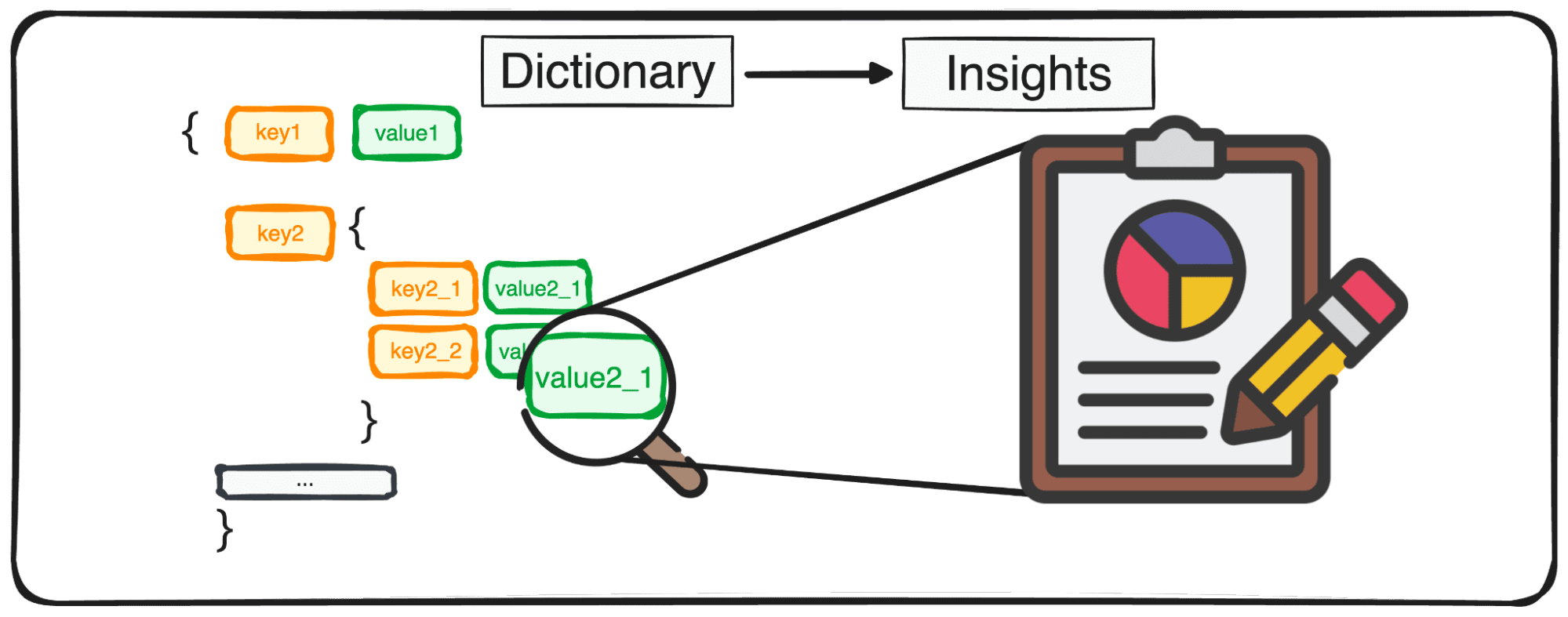
Image by Author
# Introduction
Why do people misread your data? Because they’re data illiterate. That’s your answer. Done. The end of the article. We can go home.

Image Source: Tenor
Yes, it’s true; data literacy is still at low levels in many organizations, even those that are “data-driven”. However, ours is not to go home, but to stick around and try to change that with the way we present our data. We can only improve our own data storytelling skills.
If you are looking to refine how you wrap data in narrative, with structure, anecdotes, and visual appeal, check out this guide on crafting an impressive analyst portfolio. It offers practical tips for building data stories that actually resonate with your audience.

Knowing all this, we can make sure our data is understood the way we intended, which is, in truth, the only thing that matters in our job.
# Reason #1: You Assume Logic Always Wins
It doesn’t. People interpret data emotionally, through personal narratives, and have selective attention. The numbers won’t speak for themselves. You have to make them speak without any ambiguity and room for interpretation.
Example: Your chart shows the sales have dropped, but the head of sales dismisses it. Why? They feel the sales team worked harder than ever. This is a classic example of cognitive dissonance.

Fix It: Before showing the chart, show this takeaway: “Despite increased sales activity, sales fell 14% this quarter. This is likely due to reduced customer demand.” It gives context and explicitly provides the possible reason for the sales decline. The sales team doesn’t feel attacked so that they can accept the cold fact of the dropping sales.

# Reason #2: You Rely on the Wrong Chart
A flashy chart might grab attention, but does it really present the data clearly and unambiguously? Visual representation is exactly that: visual. Angles, lengths, and areas matter. If they’re skewed, the interpretation will be skewed.
Example: A 3D pie chart makes one budget category appear larger than it is, changing the perceived priority for funding. In this example, the sales slice seems the biggest due to perspective, even though it’s exactly the same size as the HR slice.

Fix It: Stick to using chart types that are easy to interpret, such as bar, line, 2D pie chart, or scatter plot.
In the 2D pie chart below, the size of the budget allocation is much easier to interpret.

Use fancy plots only if you have a good reason for it.
# Reason #3: Correlation Causation
You understand that correlation is not the same as causation. Of course, you do; you analyze data. The same often doesn’t apply to your audience, as they’re often not that versed in mathematics and statistics. I know, I know, you think that the difference between correlation and causation is common knowledge. Trust me, it’s not: two metrics move together, and most people will assume one causes the other.
Example: A spike in social media mentions of the brand (40%) coincides with a sales increase (19%) in the same week. The marketing team doubles ad spend. But the spike was caused by a popular influencer’s unpaid review; additional spending didn’t have anything to do with it.
Fix It: Label relationships clearly with “correlated,” “causal,” or “no proven link.”

Use experiments or additional data if you want to prove causation.
# Reason #4: You Present Everything at Once
People who work with data tend to think that the more data they cram onto a dashboard or a report, the more credible and professional it is. It’s not. The human brain doesn’t have unlimited capacity to soak in information. If you overload the dashboard with info, people will skim through, miss important data, and misunderstand the context.
Example: You might show six KPIs at once on one slide, e.g., customer growth, churn, acquisition cost, net promoter score (NPS), revenue per user, and market share.

The CEO fixated on a small dip in NPS, derailing the meeting while completely missing a 13% drop in premium customer retention, a much bigger issue.
Fix It: Be a slide Nazi: “One slide, one chart, one main takeaway.” For the earlier example, the takeaway could be: “Premium customer retention fell 13% this quarter, mainly due to service outages.” This keeps the discussion focused on the most important issue.

# Reason #5: You’re Fixated on Precision
You think showing granular breakdowns and raw numbers with six decimal places is more credible than rounding the numbers. Basically, you think that more decimal places show how complex the calculation behind it is. Well, congratulations on that complexity. However, your audience latches onto round numbers, trends, and comparisons. The sixth decimal of accuracy? Confusing. Distracting.
Example: Your report says: “Defect rate increased from 3.267481% to 3.841029%.” WTF!? People will get lost and miss the fact that the change is significant.
Fix It: Round the numbers and frame them. For example, your report could say: “Defect rate rose from 3.3% to 3.8% — a 15% increase.” Clean and easy to understand the change.
# Reason #6: You Use Vague Terminology
If the terminology you use is vague, or the metric names, definitions, and labels are not clear, you leave the door open for multiple interpretations. The wrong one among those, too.
Example: Your slide shows “Retention rate.”

The retention of who or what? Half the team will think it’s customer retention, the other half that it’s revenue retention.
Fix It: Say “customer retention” instead of just “retention.” Be precise. Also, whenever possible, use concise and precise definitions of the metrics you use, such as: “Customer retention = % of customers active this month who were also active last month.”

You’ll avoid confusion and also help those who may know what metrics you’re talking about, but are not quite sure what it means or how it’s calculated.
# Reason #7: You Use the Wrong Context Level
When presenting data, it’s easy to miss the context and present the data that is overly zoomed in or zoomed out. This can distort perception; insignificant changes might seem significant and vice versa.
Example: You show a 10-year revenue trend in a monthly planning meeting. Well, kudos for showing the big picture, but it hides a smaller, much more important picture: there’s a 17% drop in the last quarter.

Fix It: Zoom into the relevant period, e.g., last 6 or 12 months. Then you can say: “Here’s the revenue in the last 12 months. Note the drop in Q4.”

# Reason #8: You’re Too Focused on the Averages
Yes, the averages are great. Sometimes. However, they don’t show distribution. They hide the extremes and, thus, the story behind them.
Example: Your report says that the average customer spends \$80 per month. Cool story, bro. In reality, most of your customers spent \$30-\$40, meaning that only a few high-spending customers push the average up. Oh, yeah, that campaign that marketing created based on your report, the one targeting the \$80 customers. Sorry, it’s not gonna work.
Fix It: Always show distribution by using histograms, box plots, or percentile breakdowns. Use median instead of the mean, e.g. “Median spend is \$38, with 10% of customers spending over \$190.” With that information, the marketing strategy can be significantly improved.

# Reason #9: You Overcomplicate the Visuals
Too many colors, too many shapes, too many labels, and legend categories can turn your chart into an unsolvable puzzle. The visuals should be visually appealing and informative; striking the balance between the two is almost a work of art.
Example: Your line chart tracks 13 products (that’s 13 lines!) over 12 months. Each chart has its own color. By month three, no one can follow a single trend. On top of that, you added data labels to make the chart easier to read. Well, you failed! The data labels started resembling Jamie and Cersei Lannister — they’re disturbingly intimate.

Fix It: Simplify the charts. Show the top three or five categories, group the rest as “Other.” Provide important information only; not all data you have deserves to be visualized. Leave something for later, when the users want to drill down.

# Reason #10: You Don’t Tell What to Do
The data is not the goal in itself. It should lead to something, and that something is action. You should always provide recommendations on the next steps based on your data.
Example: You show churn has risen 14% and end the presentation there. OK, everybody agrees the churn rise is a problem, but what should be done with it?
Fix It: You should pair every major insight with an actionable recommendation. For example, say “Churn rose 14% this quarter, mainly in premium customers. Recommend launching a retention offer for this group within the next month.” With this, you’ve reached the ultimate goal of data storytelling — making business decisions based on data.
# Conclusion
As someone presenting data, you need to be an amateur psychologist sometimes. You should think about the people you present to: their background, biases, emotions, and how they process information.
The ten points I talked about show you how to do that. Try to implement them the next time you present your findings. You’ll see how the possibility of misinterpretation decreases and your work becomes much easier.
Nate Rosidi is a data scientist and in product strategy. He’s also an adjunct professor teaching analytics, and is the founder of StrataScratch, a platform helping data scientists prepare for their interviews with real interview questions from top companies. Nate writes on the latest trends in the career market, gives interview advice, shares data science projects, and covers everything SQL.



